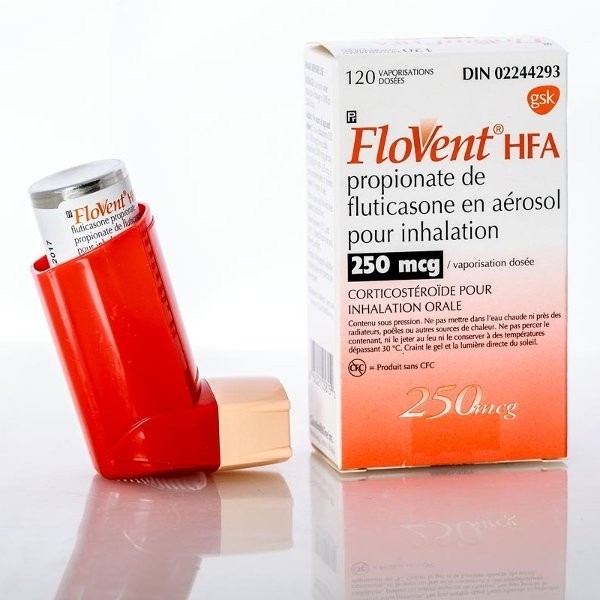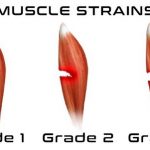
Contents
- 1 Fluticasone Propionate Oral Inhaler (Flovent)
- 1.0.1 Brand Names for Fluticasone Propionate Oral Inhaler
- 1.0.2 Availability as a Generic Drug
- 1.0.3 Prescription Requirement
- 1.0.4 Side Effects of Fluticasone Propionate Oral Inhaler
- 1.0.5 Dosage for Fluticasone Propionate Oral Inhaler
- 1.0.6 Interactions with Fluticasone Propionate Oral Inhaler
- 1.0.7 Safety During Pregnancy or Breastfeeding
- 1.0.8 Other Important Information about Fluticasone Propionate Oral Inhaler
- 1.0.9 Summary
- 1.0.10 Related Disease Conditions
- 1.1 Allergy (Allergies)
- 1.2 Neutropenia
- 1.3 Asthma
- 1.4 Asthma Over-the-Counter Treatment
- 1.5 Eosinophilic Esophagitis (EOE)
- 1.6 Asthma Medications
- 1.7 Bronchiectasis
- 1.8 Asthma in Children
- 1.9 Asthma Complexities
Fluticasone Propionate Oral Inhaler (Flovent)
Fluticasone propionate is a man-made steroid of the glucocorticoid family, related to the naturally-occurring steroid hormone, cortisol or hydrocortisone, produced by the adrenal glands. Glucocorticoid steroids have potent anti-inflammatory actions. When used as an inhaler, fluticasone travels to the lung’s airways. In asthmatic patients, the suppression of airway inflammation reduces muscle cell spasm and fluid and cell accumulation that causes airway narrowing. The narrowing makes it difficult to breathe. In lower doses, very little fluticasone is absorbed into the body. In higher doses, it may cause side effects elsewhere. The FDA approved fluticasone in March 1996.
Brand Names for Fluticasone Propionate Oral Inhaler
Flovent Diskus, Flovent HFA
Availability as a Generic Drug
GENERIC AVAILABLE: No
Prescription Requirement
Side Effects of Fluticasone Propionate Oral Inhaler
The most common side effects of fluticasone are:
- headache,
- upper respiratory infections,
- throat irritation,
- nasal congestion,
- nasal discharge,
- hoarseness or difficulty speaking.
Fluticasone may also cause bronchospasms (wheezing). Bronchospasms should be treated with a rescue inhaler.
Oral candidiasis or thrush may occur.
High doses of inhaled fluticasone may weaken bones and promote fractures.
Higher doses of fluticasone may suppress the body’s ability to make its own natural glucocorticoid in the adrenal gland. People with adrenal gland suppression need increased amounts of glucocorticoids during periods of high physical stress.
Inhaled steroids may suppress growth, weaken the immune system, and increase the risk of glaucoma and cataracts.
QUESTION
Dosage for Fluticasone Propionate Oral Inhaler
Doses vary from patient to patient.
The recommended dose for the aerosol is 88 to 440 mcg twice daily.
The recommended dose for the Diskhaler is 100 to 1000 mcg twice daily. After administration, rinse the mouth with water or mouthwash to minimize dry mouth, throat irritation, and hoarseness.
The aerosol inhaler must be cleaned at least once a week.
If a bronchodilator aerosol spray, for example, albuterol, is used, it should be used first, and then 5-15 minutes later fluticasone should be used.
Interactions with Fluticasone Propionate Oral Inhaler
Safety During Pregnancy or Breastfeeding
Studies of fluticasone during pregnancy have not been done. Fluticasone use during pregnancy should be avoided unless the potential benefit justifies the potential risk to the fetus.
It is not known if fluticasone is secreted in breast milk. Other medications in the same class as fluticasone are secreted into breast milk. It is not known whether the small amounts that may appear in the milk affect the infant.
Other Important Information about Fluticasone Propionate Oral Inhaler
Available Preparations of Fluticasone Propionate Oral Inhaler
Inhalation aerosol: 44, 110, and 220 mcg/inhalation. Inhalation powder (Diskhaler): 50, 100, and 250 mcg/inhalation.
Storage Requirements
Fluticasone should be stored at room temperature, 4°C – 30°C (39°F – 86°F), and the aerosol should be shaken well before each use.
Other important side effects include allergic reactions such as:
- swelling of face,
- throat swelling,
- tongue swelling,
- rash,
- hives, and
- breathing problems.
Summary
Fluticasone propionate oral inhaler (Flovent (Discontinued), Flovent Diskus, Flovent HFA) is prescribed for asthma treatment in patients four years of age or older. Review side effects, drug interactions, dosing, and pregnancy information before taking this drug.
Related Disease Conditions
Allergy (Allergies)
Allergy refers to a misguided immune system reaction to foreign substances. It affects approximately 50 million North Americans and commonly involves the eyes, nose, lungs, skin, and stomach. Common allergic disorders include hay fever, asthma, allergic eyes, allergic eczema, hives, and allergic shock.
Neutropenia
Neutropenia is a decrease in the number of neutrophils, a type of white blood cell. Symptoms include gum pain and swelling, skin abscesses, recurrent ear and sinus infections, sore mouth, low-grade fever, pneumonia-like symptoms, and pain and irritation around the rectal area. It has numerous causes, including infections, medications, vitamin deficiencies, bone marrow diseases, radiation therapy, and hypersplenism. Treatment depends on the cause and the patient’s health.
Asthma
Asthma is a condition where hyperreactive airways constrict, resulting in wheezing, coughing, and shortness of breath. Causes include genetics, environmental factors, allergies, and more. Diagnosis is based on family history and tests. Inhaled corticosteroids and bronchodilators are used for treatment. The prognosis is generally good, and exposure to allergens found on farms may protect against asthma symptoms.
Asthma Over-the-Counter Treatment
Patients with mild, infrequent asthma attacks may use over-the-counter medications to treat symptoms. These drugs are best used with a physician’s guidance, as they may have side effects and limited effectiveness.
Eosinophilic Esophagitis (EOE)
Eosinophilic esophagitis is an inflammation of the esophagus. It has many causes, including acid reflux, heartburn, viruses, medications, allergies, asthma, and more. Symptoms include difficulty swallowing food, abdominal and chest pain, and heartburn.
Asthma Medications
Asthma medications include long-term control with anti-inflammatory drugs and quick relief from bronchodilators. They can be inhaled or taken orally. Individuals with certain health conditions should avoid OTC asthma drugs like Primatene Mist and Bronkaid.
Bronchiectasis
Bronchiectasis has three types: cylindrical, saccular or varicose, and cystic. Causes include infection, environmental exposure, drug or alcohol abuse, and congenital conditions. Symptoms include shortness of breath, fatigue, chronic cough, bloody sputum, and wheezing. Treatment may involve antibiotics or surgery.
Asthma in Children
Asthma in children presents with symptoms like coughing and wheezing. Diagnosis is based on symptoms and exams. Various medications are used to treat childhood asthma.
Asthma Complexities
Unusual asthma symptoms include sighing, difficulty sleeping, anxiety, chronic cough, pneumonia, and rapid breathing. These complexities make diagnosis and treatment challenging.


